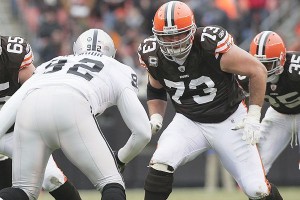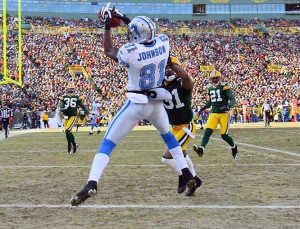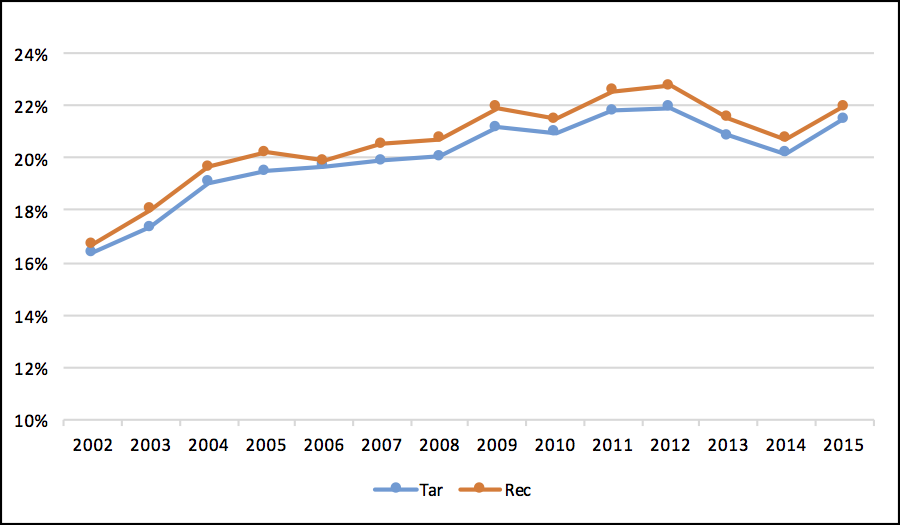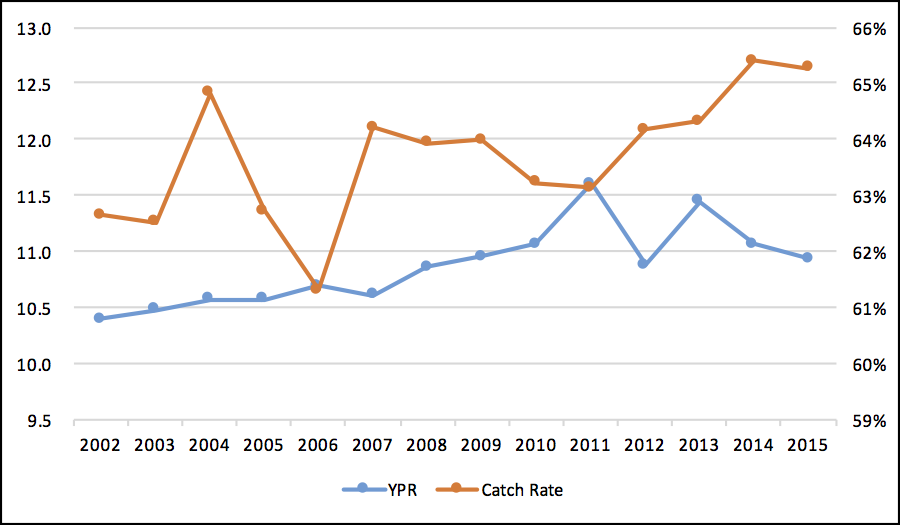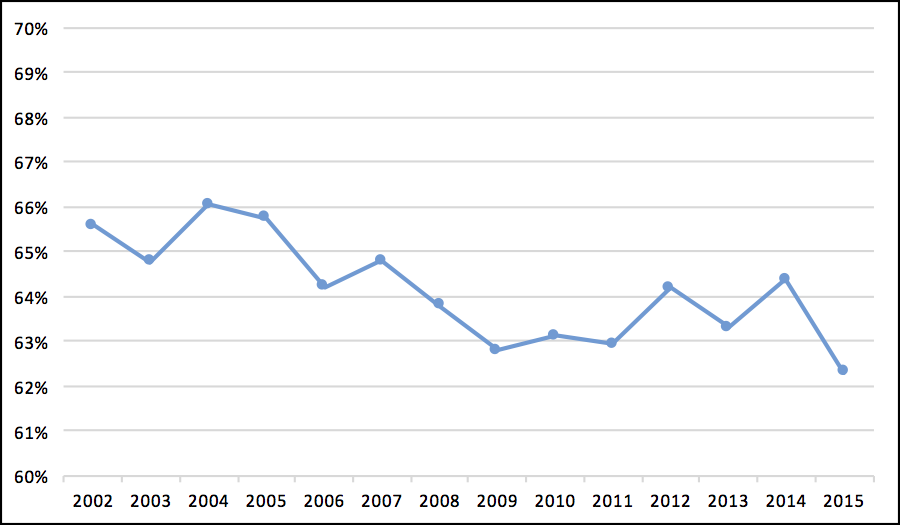Bob Ford, a longtime fan of Pro-Football-Reference and Football Perspective, has contributed today’s guest post. Bob is the owner and founder of GOATbacks.com, which looks at the greatest running backs of all time. Thanks to Bob for today’s article!
Is DeMarco Murray in Danger of Joining A Very Exclusive Club?
In 2014 DeMarco Murray rushed for 1,845 yards on 392 carries at 4.7 yards per carry and just over 115 yards a game. That’s a great rushing season by any standard, and it puts Murray in some pretty exclusive company. Since Jim Brown first broke 1,800 rushing yards in 1963, just 16 other running backs have done it a total of 20 times, and only 3 (Dickerson, Sanders and Simpson) did it more than once.
Among the 17 RBs who’ve rushed for 1,800 yards, 10 have posted at least 10,000 career rushing yards, and 4 have at least 9,000. Those 4 are Ahman Green with 9,205, Earl Campbell with 9,407, Chris Johnson with 9,442 and Shaun Alexander with 9,553. And only 2 who’ve retired, Terrell Davis with 7,607 career rushing yards, and Jamal Anderson with 5,336, have failed to break 9,000 career rushing yards. After 5 seasons and 5,228 career rushing yards, DeMarco Murray is still active, so we don’t know how many career rushing yards he’ll eventually have, but all running backs who’ve rushed for more than 1,800 yards in a season have always, with the exception of Anderson and the singularly unique exception of Davis, put up a minimum of 9,000 career rushing yards.
Why do I call Davis a “singularly unique” exception? I’ll get to that in a minute, but consider how far behind the rest of the group Jamal Anderson, who rushed for 1,846 yards in 1998, actually is. He’s nearly 2,300 yards behind Davis and nearly 4,000 behind Green. What’s more, and not enviable for Murray, is that it’s Anderson’s career, not Davis’ or any of the others’, that bears a striking resemblance to Murray’s, and that doesn’t bode well for Murray. [continue reading…]


